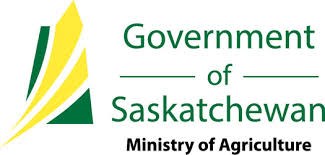As you make annual cropping decisions on your farm, you are confronted with volatility in commodity prices and farm input expenses. A key piece of knowledge in your cropping decision is your cost of production. By calculating and understanding your farm’s cost of production, you will be able to make more effective management decisions regarding: the most profitable crops for your farm, the cost effectiveness of farm inputs and whether to purchase or lease additional farm land.
Knowing the cost of production will help you determine the break-even yields and prices on your farm. This information will help you set price targets for your marketing plan. It is important to remember that the cost of production on your farm will not be the same as on your neighbour’s farm. Include both variable and fixed costs in your calculations. Variable costs, for example the cost of seed, fertilizer, chemical, and crop insurance premiums, are costs that change according to what you are producing. Fixed costs tend to remain the same regardless of your cropping mix. Fixed costs include things like the phone bill, accounting costs, depreciation and property taxes.
Having a good understanding of your cost of production will help you to improve the overall profitability of the farm, identify which enterprises or products are the most profitable, and develop an effective marketing plan.
Each year, the Saskatchewan Ministry of Agriculture publishes a ‘Crop Planning Guide’ to assist farmers in estimating their cost of production for the various crops. The guide contains an estimate of variable and fixed expenses for an average sized farm in each of the soil zones. The general assumptions are stated at the front of the guide and the crop prices used are farm gate price estimates based on the information available in December of the previous year. Prices become outdated quickly, so producers should continually adjust these figures as changes impact the markets.
It is important to remember that the figures used are estimates based on recommended production practices for that soil zone and are meant to be used as a guide. To make the best use of the Crop Planning Guide, do your calculations on the worksheet supplied in the publication or use the downloadable spreadsheet available on the website. Entering your own costs, yields and price estimates will give you a more accurate calculation of the cost of production on your farm. Updating the calculations as more information is available will help you determine your target price for your marketing plan.
In addition to the published crop planning guides, a number of on-line calculators are available on the Ministry of Agriculture website. These planners are Microsoft Excel spreadsheets and may be useful in making farm management decisions. To find these calculators go to www.agriculture.gov.sk.ca and click on ‘On-line calculators’.
The calculators cover a wide range of topics including:
• Farm Machinery Custom Rental Rate Guide Calculator
• Forage and Crop Nutrient Calculator
• Bale Grazing Calculator
• Hay Share Calculator
• Feed Value Calculator
Knowing your break-even yields and prices won’t guarantee a farm profit but it does keep you on target when used in decision making and can greatly improve your chance of success.
Pick up a Crop Planning Guide at the Ministry of Agriculture Regional Office near you, on-line at www.agriculture.gov.sk.ca or contact the Agriculture Knowledge Centre at 1-866-457-2377.
Brenda Stefanson PAg
Regional Farm Business Management Specialist
Saskatchewan Ministry of Agriculture, Watrous




